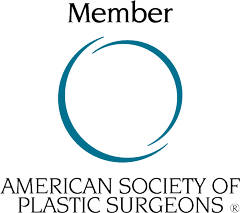
Plastic surgeons have been actively performing fat grafting for decades. In fact, the first fat transfers to both the face and breast were performed over a century ago. In 1893, a german physician, Dr. Franz Neuber, used fat transfers to correct facial defects. Only two years later, in 1895, Dr. Karl Czerny used fat grafting techniques for Breast reconstruction to restore symmetry of a breast defect.
Fat grafting, also known as Fat injections, takes fat from unwanted areas of your body, carefully processes the fat, and then transfers the fat to areas which need volume. Fat transfers have been successfully performed to the face, hands, buttocks, hips, and the breast.
Although fat transfer results are highly dependent on the technique of the surgeon, fat grafting has long been considered safe. However, some questions did remain about fat grafting to the breast. But in 2009, the American Society of Plastic Surgeons wrote a position paper publishing their conclusion that fat grafting to the breast was safe, but technique dependent.
The finding was based on case studies of hundreds of patients who underwent fat grafting to the breast. In over a decade of fat grafting to the breast, there was no evidence of increased incidence of cancer recurrence.
Although the ASPS publication had addressed fat grafts, which naturally contain a population of adipose stem cells (ASC’s), some controversy in the plastic surgery community remained about the safety of stem cell enhanced fat grafts.
The addition of adipose stem cells to fat grafts is used to improve fat graft survival rates, in addition to other regenerative functions. Questions remained regarding the use of fat grafting for Breast reconstruction in women who had had been treated for breast cancer. Surgeons did not know if active stem cells in the adipose tissue could facilitate the growth and spread of tumor cells.
This week a study co-authored by Plastic Surgeon, Peter Rubin, MD of the University of Pittsburgh Medical School, with authors Donnenberg and Zimmerlin, reported on the safety levels of culture expanded adipose stem cells in tissues with both active and dormant cancer cells.
In the animal model experiment, one population of active and and another population of dormant cancer cells were combined with culture expanded adipose stem cells.
The findings supported the contention that regenerative treatment can be safely given to patients with dormant cancers. Dormant cancer cells are not actively growing or dividing. The study also concluded that active tumors can be stimulated to grow by contact with adipose stem cells.
This asserted that regenerative stem cell therapy should not be performed when cancers are active. The University of Pittsburgh Medical School is a pioneer in the field of adipose stem cell (ASC) research. Much of the original adipose stem cell research originated at labs in the Pittsburgh Medical School in collaboration with researchers from University of California.

The new study provides encouragement for researchers, clinicians, and medical device makers who are developing stem cell treatments for post cancer (dormant) treatments.
Following reconstructive surgery, many cancer patients are left with severely damaged skin and tissue. Regenerative stem cells have the power to create new blood supply and heal tissue damaged by radiation.
One remaining question is what constitutes a ‘dormant cancer.’ In Breast reconstruction patients, the cancerous tumor is surgically removed and, in many cases, the affected area is irradiated to kill any remaining cancer cells.
One may consider cancer cells to be dormant if one year following excision and radiation, there is no evidence of disease. This is usually determined by measuring tumor markers and various diagnostic imaging tests.
The conclusion of Dr. Rubin’s co-authored peer reviewed paper which was published in Tissue Engineering reads as follows:
“Taken together with our published results in a xenograft model, which indicate that ASC augment the growth of active but not resting breast cancer cells, the available data suggest that the critical factor determining whether regeneration augments tumor growth is the state of residual tumor: Active disease is promoted, whereas dormant tumor is insensitive. This suggests that reconstructive therapy utilizing ASC-augmented whole fat should be deferred until cancer remission has been firmly established.”
(originally published 9/21/2010)




Angela says:
Dr. Ricardo L Rodriguez says:
Monique says:
Dr. Ricardo L Rodriguez says:
Cherie malriat says:
Allison Rainey says:
Dr. Ricardo L Rodriguez says:
Allison Rainehy says:
Dr. Ricardo L Rodriguez says:
MARIA AUDIN says:
Dr. Ricardo L Rodriguez says:
Cindy says:
Dr. Ricardo L Rodriguez says:
sharon mcintyre says:
Dr. Ricardo L Rodriguez says:
Meeka says:
Dr. Ricardo L Rodriguez says:
Jen says:
Dr. Ricardo L Rodriguez says:
Samantha Walach says:
Dr. Ricardo L Rodriguez says:
joyce says:
Dr. Ricardo L Rodriguez says: